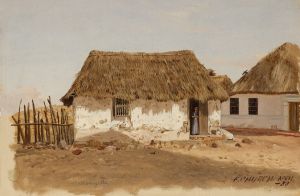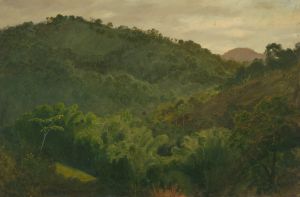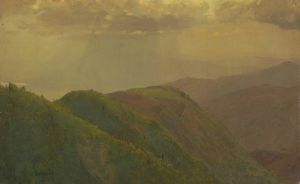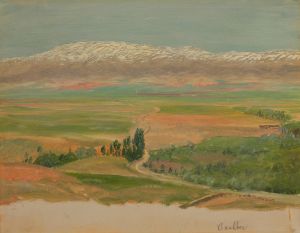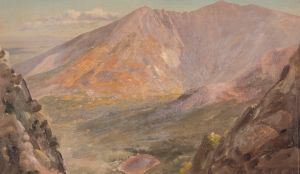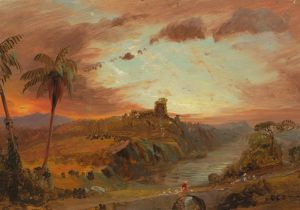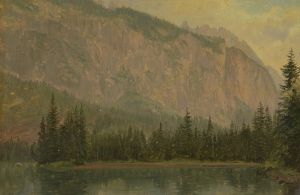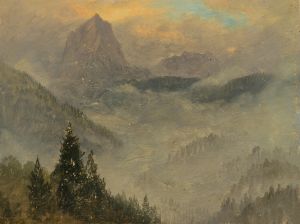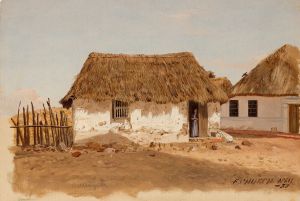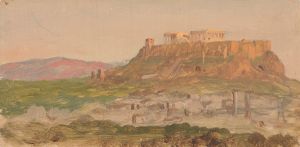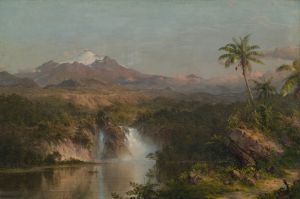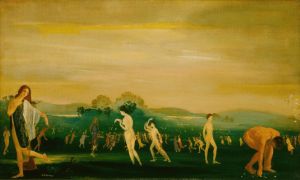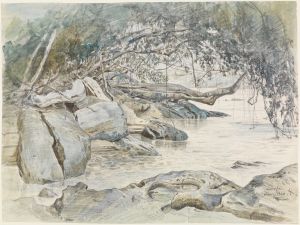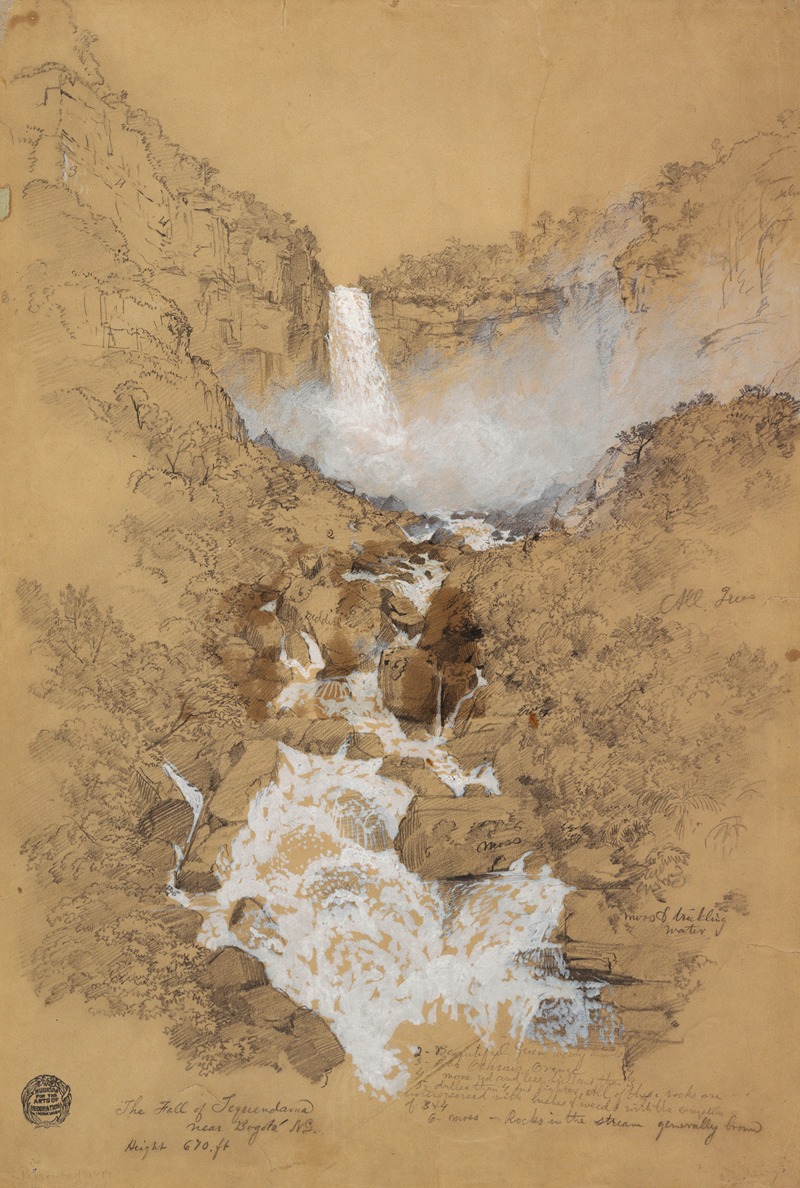
Tequendama Falls near Bogotá, Colombia
A hand-painted replica of Frederic Edwin Church’s masterpiece Tequendama Falls near Bogotá, Colombia, meticulously crafted by professional artists to capture the true essence of the original. Each piece is created with museum-quality canvas and rare mineral pigments, carefully painted by experienced artists with delicate brushstrokes and rich, layered colors to perfectly recreate the texture of the original artwork. Unlike machine-printed reproductions, this hand-painted version brings the painting to life, infused with the artist’s emotions and skill in every stroke. Whether for personal collection or home decoration, it instantly elevates the artistic atmosphere of any space.
Frederic Edwin Church, a prominent American landscape painter and a central figure in the Hudson River School, created the painting "Tequendama Falls near Bogotá, Colombia" in 1854. This work is a testament to Church's fascination with the natural world and his dedication to capturing the grandeur and beauty of landscapes from around the globe.
Church was known for his adventurous spirit and his desire to explore and document exotic locations. His journey to South America was inspired by the writings of the German naturalist and explorer Alexander von Humboldt, whose detailed descriptions of the continent's diverse landscapes captivated Church. In 1853, Church embarked on his first expedition to South America, traveling through Colombia and Ecuador. It was during this trip that he visited the Tequendama Falls, a spectacular waterfall located near Bogotá, Colombia.
Tequendama Falls, also known as Salto del Tequendama, is a natural wonder with a drop of approximately 132 meters (433 feet). The waterfall is situated on the Bogotá River and has been a significant site for both its natural beauty and its cultural importance to the indigenous Muisca people. Church's painting captures the dramatic and awe-inspiring nature of the falls, showcasing his skill in rendering the interplay of light, water, and landscape.
In "Tequendama Falls near Bogotá, Colombia," Church employs his characteristic attention to detail and vibrant use of color to convey the lushness and vitality of the South American environment. The painting depicts the waterfall cascading down a rocky cliff, surrounded by dense vegetation and mist. Church's composition emphasizes the verticality and power of the falls, drawing the viewer's eye upward and creating a sense of majesty and wonder.
This painting is notable not only for its artistic merit but also for its role in the broader context of 19th-century landscape painting. Church's work reflects the era's interest in exploration and the documentation of the natural world, as well as the influence of Humboldt's scientific observations. By bringing the exotic landscapes of South America to an American audience, Church expanded the scope of landscape painting and contributed to a greater appreciation of the world's diverse environments.
"Tequendama Falls near Bogotá, Colombia" is part of Church's broader body of work that includes other notable South American landscapes, such as "The Heart of the Andes" and "Cotopaxi." These paintings helped establish Church's reputation as one of the leading landscape painters of his time and demonstrated his ability to capture the sublime beauty of nature.
Today, Frederic Edwin Church's "Tequendama Falls near Bogotá, Colombia" is recognized as an important work within the canon of American art. It exemplifies Church's mastery of landscape painting and his commitment to exploring and depicting the natural world with precision and reverence. The painting continues to be admired for its artistic excellence and its contribution to the understanding and appreciation of the natural landscapes of South America.





